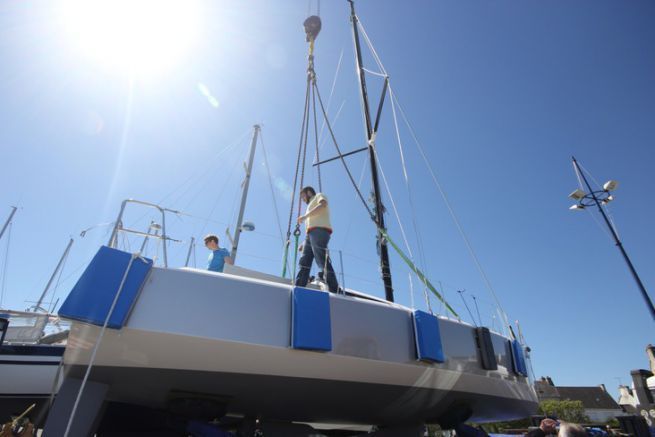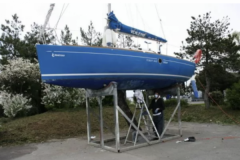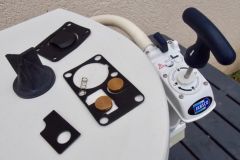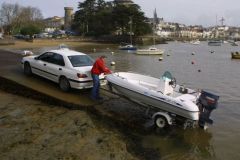The good weather is finally here and your sailboat can come out of its hibernation. The spring launch is always a great moment of the season, it is the promise of beautiful sailing and peaceful stopovers. To make this handling a success, we have prepared a complete file for you.
We have seen previously:
- The 10 steps to a successful fairing
- How to prepare your sailboat for launching
- How to relaunch your sailboat
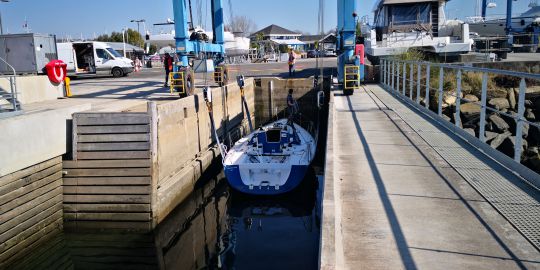
Let's look at the tips and tricks that will help you make a good catch and release, and the key word will be anticipation.
- For those who are new to the subject, allow about 3 hours for the launch of your sailboat.
- For antifouling touch-ups, remember to prepare your equipment before lifting the boat. Crane operators are patient, but don't overdo it. If everything is ready, count less than 30 minutes to make the antifouling connections.
- Check the presence of the probes before launching, especially the speedo's one. They are often removed during the fairing, it would be silly to sink at the launch.
- Bring your tools: a ladder to climb aboard the boat when it is on land. Brushes and rollers to make the antifouling connections. Paint material (antifouling can, paint tray, mixer) and don't forget your protective equipment (overalls, goggles, masks, and gloves).
- Lay out cardboard boxes on the deck of your boat to make a floor mat (tarp will tend to slip and cardboard is cheap). You will be able to put your dirty shoes on it on the careening area.
- Bring a few pieces of carpet with you. They will serve to protect the hull paint from the sometimes abrasive straps.
- Your boat is not equipped with markings indicating the location of the straps? Take advantage of this launch to indicate, with a small triangle of red tape, the correct position of the lifting straps.
- When it's time to take your boat out of the water and you have to position the straps blindly, because they are submerged, you'll surely be glad you thought of these little markings.
- Since you will have to start your engine that hasn't been running for months, think about the usual checks: oil levels, fuel level, opening of the cooling valve, opening of the supply valve and the level of the engine starting battery.

If you use a crane for the launching:
- You'll have to find a kind soul to lend you a hand. Or rather to hold the front and rear hawsers of the boat to stabilize it in the air. Halyards of 15 m will probably be enough, the crane operator can confirm this.
- Also, you will not be too many two for the preparation of the boat, the installation of the mooring lines, the fenders and the positioning of the straps.
- Removing the backstay is essential for the crane to work properly, so that the hook does not get stuck in the wire rope.
- Be careful with the crane hook! It can damage the aerials (windvane(s) and VHF antenna). It is best to reinstall your aerial instruments after launching.
- When leaving the water for wintering, remember to dismantle the aerials. If you do not want to or cannot dismantle your VHF antenna, turn it upside down for crane handling.
If you don't think you are competent enough to perform these operations, you can call on your sailmaker, who is experienced in climbing rigs.
This list is not meant to be exhaustive, so feel free to share your tips in the comments.
Now it's time to head to your berth to prepare for the first sail. But before you leave, take the time to inspect your sailboat from top to bottom so you won't be surprised once you're away from the crane.

